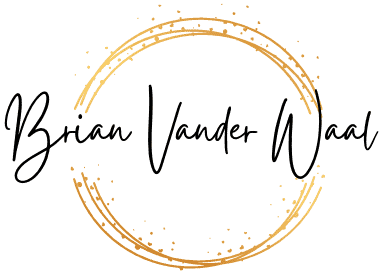CV vs Resume . . . what is the difference, and which one is the best choice for you?
There are many differences between a curriculum vitae (CV) and a resume, which can be important to know when applying for jobs in different parts of the world. On the other hand, the meaning and use of these words, particularly the word curriculum vitae or CV, varies depending on the country in which you live. In some cases, curriculum vitae and resume are just two different words to mean the same thing and the country you are applying for work determines which word you use.
In this blog post, I will cover:
- In what countries CVs and resumes are used
- What a CV and resume is
- Compare and contrast CVs and resumes, highlighting the key similarities and differences between them
- The pros and cons of each
- How to write a CV and resume
- What to include in a CV and resume
- Examples of CVs and resumes
By the end of this blog, you should clearly understand each purpose, how to write a CV and resume, and which one is right for you in your particular situation.
Key Takeaways (TL;DR)
- CV vs Resume: It’s Not Just About Length – A CV is detailed and comprehensive, often used for academic or research roles, while a resume is shorter and job-focused, ideal for business and industry roles.
- Location Matters – In the UK, Europe, and New Zealand, a CV = resume. In the US and Canada, a CV is for academia, and a resume is for job applications. In Australia, South Africa, and India, both terms are used interchangeably, but CVs are more common for white-collar jobs.
- CVs Are Long, Resumes Are Short – A CV can be 2–10+ pages, detailing education, work history, publications, and achievements. A resume? One page, two max, focusing only on the most relevant experience for a specific role.
- Tailoring Is Everything – Both CVs and resumes need to be customised for the job. Don’t send a generic document and expect results!
- Resumes Save Time, CVs Tell a Story – Hiring managers in business have seconds to scan a resume. Academic recruiters expect a deep dive into your career history with a CV.
- Pro Tip: Always check the job description or ask the employer what they prefer before submitting your application.
Table of Contents
Who am I, and why should you trust my CV vs Resume guide?
My name is Brian Vander Waal, and I have invested more than 19 years in the employment and careers sector. As a Career Coach, I have supported thousands of clients with creating resumes, CVs, and cover letters that have helped them land their dream jobs. Due to my expertise and experience, I know what it takes to help people succeed in creating CVs, resumes, and cover letters.
What countries are CVs and resumes used in?
When I moved to the UK from the US in 2003, one of the things I worked out in the early days was that a British CV was essentially a resume. This is a source of confusion for many ex-pats.
UK, Ireland, Europe, and New Zealand
I learned that in the UK, Ireland, Europe, New Zealand, and some other countries in the world, the term CV is basically synonymous with the word résumé. CVs are the most common type of job application document. If you’re seeking employment in these countries and the role requires a curriculum vitae, you should know that it is essentially a résumé.
United States and Canada
In the United States and Canada, on the other hand, resumes are more common. However, the CVs job applicants send to recruiters in the UK, Ireland, Europe, and New Zealand are similar in style, structure, and content to the resumes that job seekers send to recruiters in North America. The CV format and resume format are almost identical. In both cases, these documents are shorter because most employers have less time to review applications than those hiring for an academic position.
Australia, South Africa, and India
In Australia, South Africa, and India, ‘CV’ and ‘resume’ are synonymous terms. Although ‘CV’ and ‘resume’ mean the same thing, candidates use CVs more frequently for white-collar jobs and resumes for blue-collar and unskilled ones in these countries.
South Asia
In South Asia, employers require a slightly different document known as a “biodata.” A biodata corresponds to the American resume or European CV in terms of structure but is more focused on personal data. In addition to one’s date of birth, marital status, ethnicity, and race, it includes one’s salary. You can use the biodata to apply for jobs in India, Pakistan, and Bangladesh.
Difference Between CVs and Resumes in North America
In the USA and Canada, CVs and resumes are different and have distinctly different purposes. What distinguishes a ‘resume’ and ‘curriculum vitae (CV) in the USA and Canada is that CVs are longer documents that are used to apply for academic or research positions. Curriculum vitae are also commonly used in academic or research settings in the UK and Europe. In this case, they are usually called an “academic CV.” These documents are similar in style, structure, and content to the CVs people use to apply for an academic position in North America.
Both CVs and resumes are used in different parts of the world. It is always best to consult with the employer beforehand to see which type of document they prefer. Although the criteria are often stated clearly in the job advertisement.

What is a CV?
A CV or curriculum vitae (which is Latin for “course of life”) is a detailed description of your entire career and academic credentials. In the United States and Canada, a CV is most commonly used for an application for an academic position, such as PhDs, postdoctoral fellowships, research grants, and so on. It provides a comprehensive overview of your qualifications.
A North American CV
A North American CV is longer and more detailed than a resume. As a result, it may be two or three pages long, but it may also span ten or more pages if required. In particular, it is a document that outlines your:
- Educational history
- Qualifications
- Academic achievements
- Publications
- Research experience
- Skills
- Work history
- Awards
- Honors
- Other achievements.
Further, this is a document that grows over time as you list each qualification you have achieved, each publication you have written, every teaching experience, and every research experience.
On the other hand, the North American CV described above is often called an ‘Academic CV’ in the UK, Europe, and New Zealand. Academic CVs are similar in format, style, and content to the CVs in the USA and Canada.
A UK, Europe, Ireland, and New Zealand CV
In the UK, Ireland, Europe, and New Zealand, a CV:
- Means something different than in the USA and Canada.
- Is basically the same as a resume described below. In other words, it is a brief, descriptive document in which job seekers outline their skills, work experience, educational history, and qualifications.
- It is tailored to a specific job role.
- These CVs (like resumes) are generally sent to private-sector employers.
Whilst CVs in the UK, Ireland, Europe, and New Zealand are quite similar to resumes in North America, the main difference is:
- CVs in the UK and Europe are often 2 pages and sometimes more, depending on experience
- Whereas resumes in the USA and Canada are generally one page and occasionally more based on experience.
Below is an example of a British CV, which is very similar to a North American resume described below:
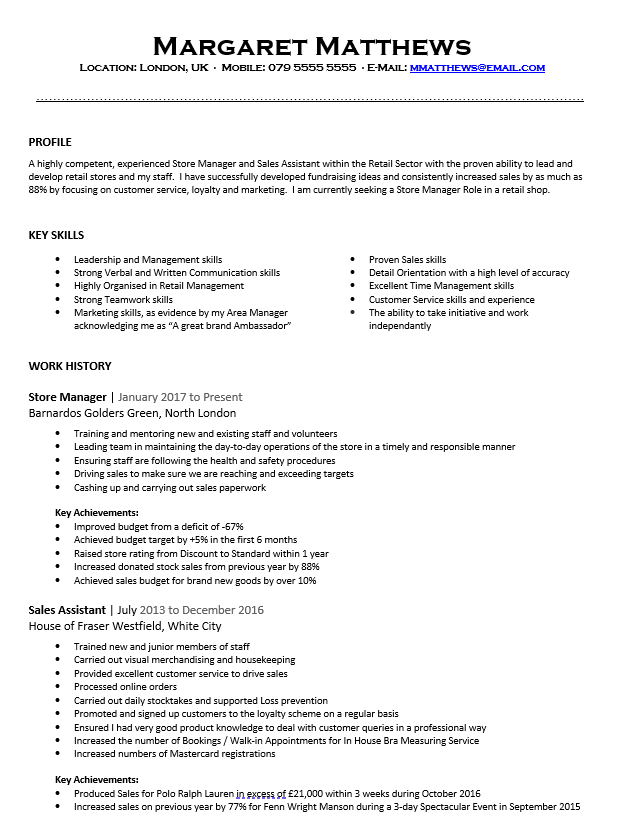

What is a Resume?
A resume (or résumé, from French for “summary” or “to sum up”) is a brief, descriptive document that a job seeker in North America (and in some cases Australia, South Africa, and India) will send to a hiring manager to apply for a position that a potential employer is advertising. It is shorter than a CV and it provides a brief overview of a candidate’s skills, work history, relevant experience, educational history, and qualifications. A good resume focuses on a specific job and is one to two pages long, depending on years of experience.
Unlike a CV or ‘Academic CV’, which can be highly detailed, a resume focuses on only the most relevant information and is tailored to the job description of the role you are applying for. For this reason, resumes are often easier to read than CVs. They are also more commonly used in the business world, as employers typically have less time to review resumes, than those in academic or research settings who may request a CV.

CV vs Resume – Similarities Between a CV and a Resume
CVs and resumes:
- Are tailored to the position you are applying for
- Should demonstrate your proficiency
- Are used to land an interview
- Are not usually composed of personal preferences
CV vs Resume – Differences Between a CV and a Resume.
There are several key differences between a CV and a resume. The below infographic summarizes some of the differences:
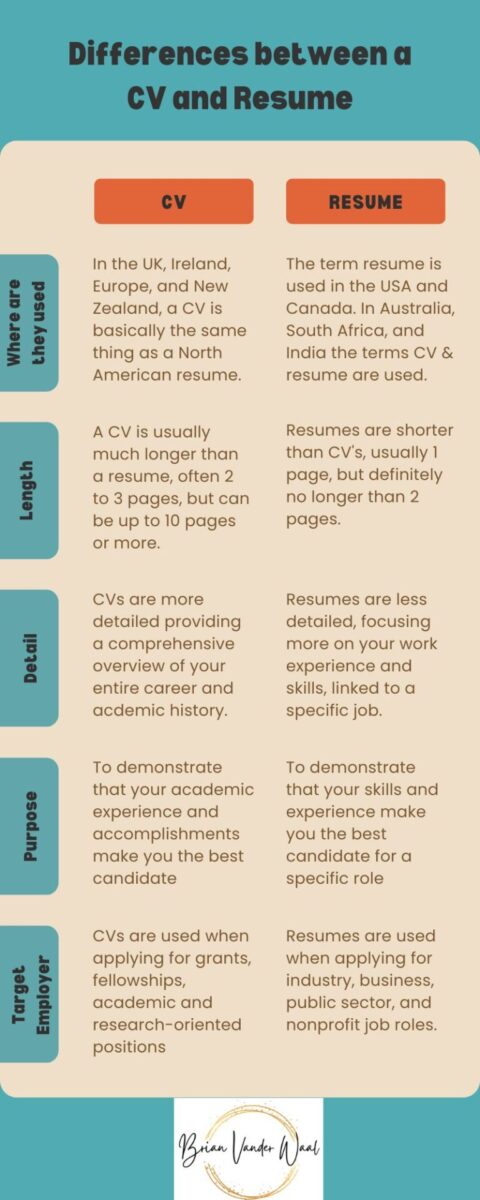
If you are visually impaired, cannot read the above infographic or would like a fuller explanation of the infographic above, please see below a more detailed description of the key differences between a CV and a Resume.
CV
- Perhaps the most obvious difference is length – a CV is usually much longer than a resume, often two to three pages, but can be up to 10 pages or more.
- The extra space on CVs allows you to include more information about your education, qualifications, skills, work history, research experience, academic achievements, and professional achievements.
- CVs are more detailed than resumes, providing a comprehensive overview of your career.
- The purpose of a CV is to demonstrate that your academic experience and accomplishments make you the best candidate for a particular academic position.
- In North America, candidates use CVs when applying for roles in academic, research, scientific, or medical fields. They particularly use CVs when applying for grants, fellowships, and academic and research-oriented positions.
Resume
- Resumes are shorter and less detailed than CVs. They are usually one page but definitely no longer than two pages.
- The purpose of a resume is to demonstrate that your experience and skills make you the best candidate for a specific role which you are applying for.
- Resumes focus more on your work experience and skills and typically do not include a section for research or publications.
- Resumes are used when applying for industry, business, public sector, and nonprofit job roles, so the target audience is hiring managers and recruiters.
However, the type of job you are applying for will ultimately dictate which document you use. If you have any questions about which to use, it is always best to consult with the employer beforehand.
CV vs Resume – Pros and Cons of Each
Now that we know the similarities and differences between a CV and a resume, let’s examine their pros and cons.
CV pros:
- More space to showcase your qualifications and achievements
- CVs can be used in academic, research, scientific, or medical fields.
- Provides a comprehensive overview of your skills and experience
CV cons:
- Longer and more detailed than a resume, which can make it difficult to read
- Not as commonly used in the business world
Resume pros:
- Shorter and easier to read than a CV
- More commonly used in the business world
- Focuses on only the most relevant information
Resume cons:
- Does not provide as much space to showcase your qualifications and achievements
- Limited to two pages or less and often just one page
- Resumes cannot be used in academic or research settings
So, which one should you use?
The answer depends on the job you are applying for and often what country you live in. If you are applying for a job in academia or research, then a CV is the way to go. However, if you are applying for a job in the business world, then a resume.

How to write a CV?
Some tips on how to write a traditional CV include:
- Firstly, at the top of your CV, include a Header with your name and contact information, including your phone number and email address. I no longer advise you to include your address on your CV, as candidates now submit CVs digitally to recruiters online and via email.
- Secondly, below the Header, include a personal profile or summary of qualifications. This should briefly overview your skills, qualifications, and experience.
- Thirdly, list all relevant skills, such as hard and soft skills.
- Fourthly, list your education and training in reverse chronological order, starting with your most recent qualifications. Include the name and location of the institution, as well as the dates you attended.
- Next, list your work experience and other professional experience in reverse chronological order, starting with your most recent job. When listing your work experience include the name and location of the employer, as well as your job title and dates of employment.
- Then list any relevant awards or honors, such as scholarships or fellowships.
- List any relevant publications, such as books, articles, or conference papers.
- Finally, list any other relevant information, such as professional memberships or volunteer work.
Remember that there is no right way to write a CV. The most important thing is to include a detailed description of your entire career and academic credentials, so you have the best chance of securing the role you are applying for. If you need help with cv writing or want someone to do it for you, discover the best CV writing service.
What to Include in a CV:
(Known as an “Academic CV” in the UK, Europe, and New Zealand)
On a CV or Academic CV you should include:
- Full Name
- Contact Information
- Personal Profile
- Research Objective / Interests
- Education
- Professional Academic Appointments
- Publications (academic papers, books, book chapters, peer-reviewed publications, and other publications)
- Work Experience
- Teaching or lecturing experience
- Research Experience / Lab Experience / Graduate Fieldwork
- Awards and Honors
- Grants and Fellowships
- Conferences and courses
- Skills
- Languages
- Certificates
- Grants and fellowships
- Non-Academic Activities
- Memberships
- References
CV Example
Below is an example of a CV or Academic CV:
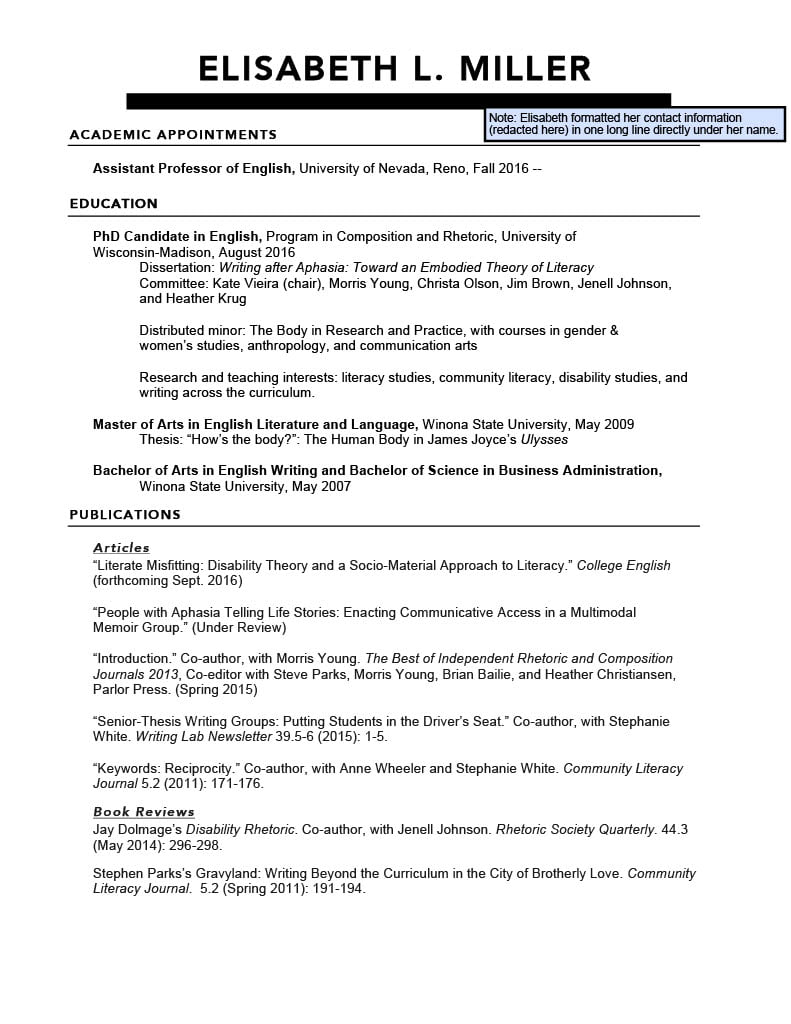
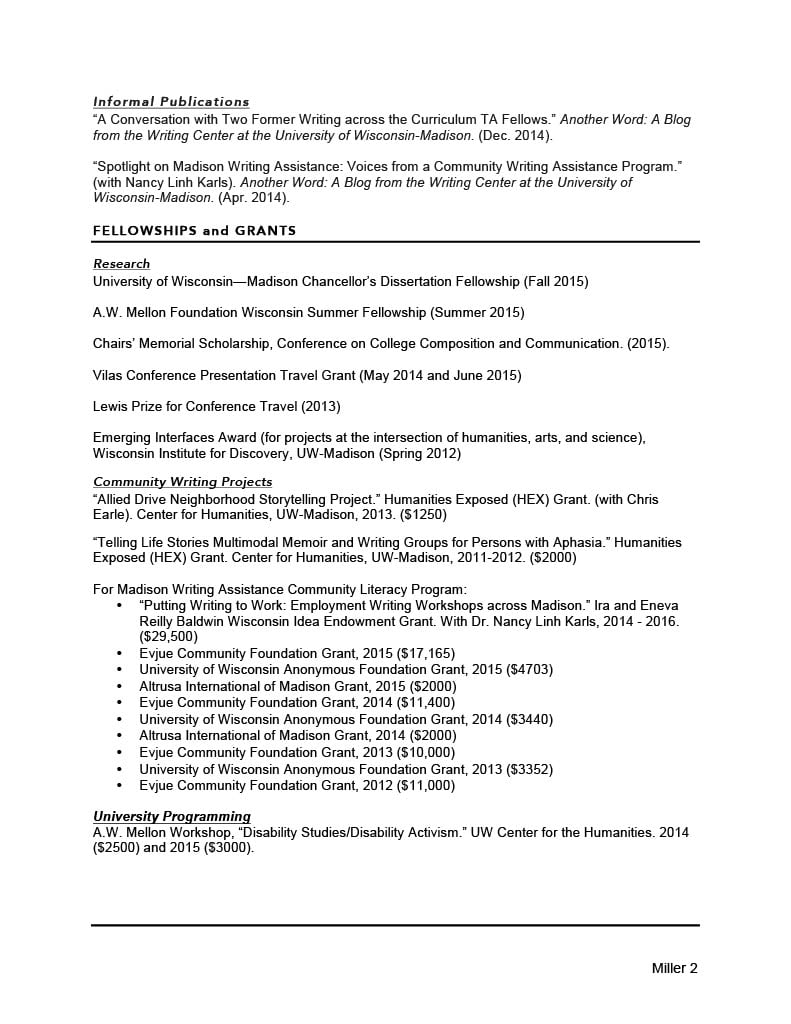



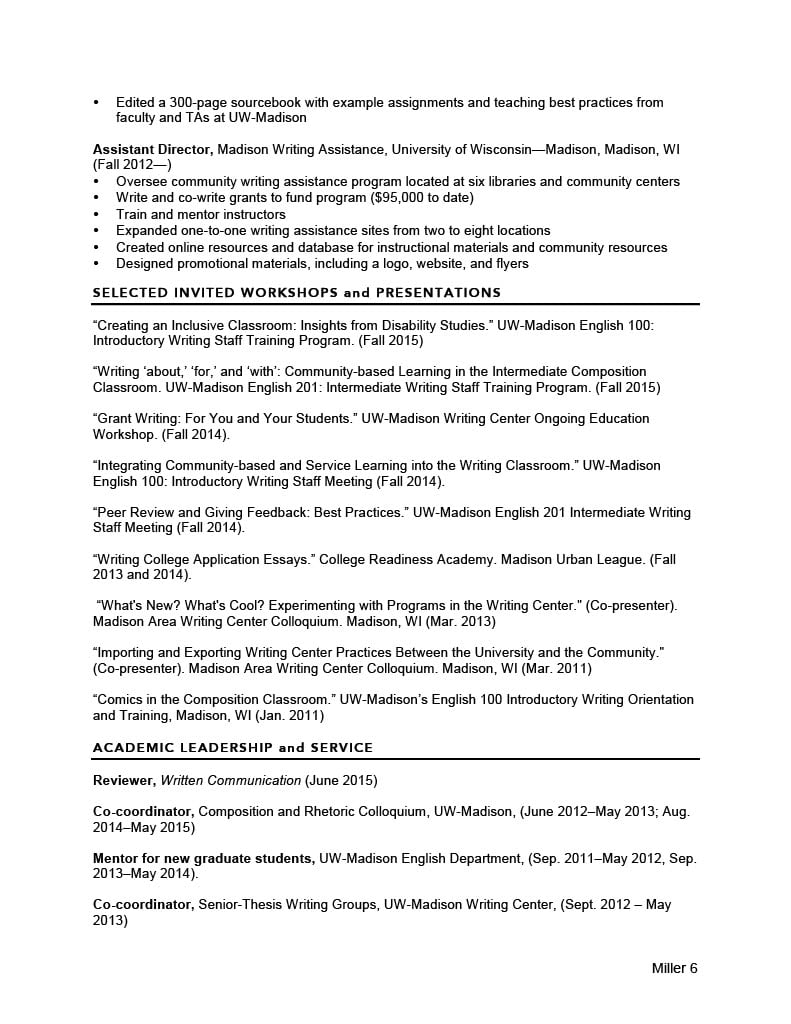
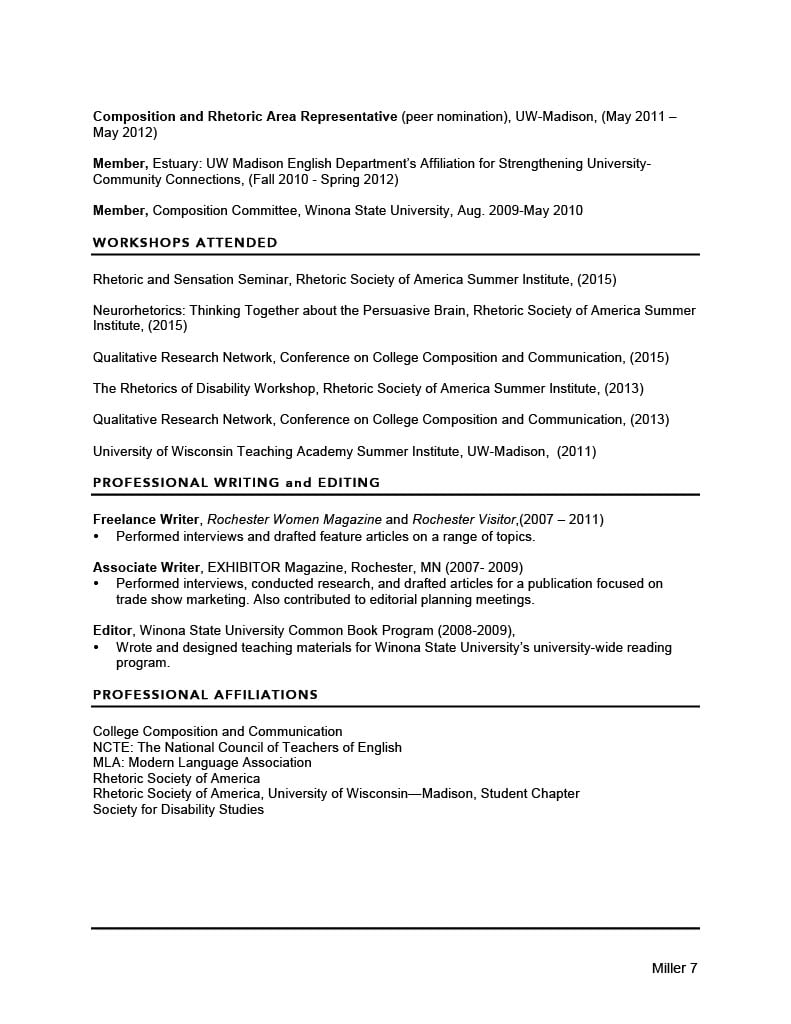

Source: UW – Madison
How to Write a Resume
Some tips on how to write a traditional resume include:
- Start with your name and contact information, including your phone number, and email address. I no longer advise you to include your address on your resume, since candidates now submit resumes digitally to recruiters online and via email.
- Include a personal profile, highlighting your unique selling points (skills, qualities, qualifications, and experience), along with the type of role you are seeking.
- List your relevant work experience in reverse chronological order, starting with your most recent job.
- When listing your work experience include the name and location of the employer, as well as your job title and dates of employment.
- List your education and training in reverse chronological order, starting with your most recent qualifications.
- When listing your education history, include the name and location of the institution, as well as the dates you attended.
- List any relevant skills. You can tailor your resume to the job description by including each specific skill that is relevant to the job role.
- List any relevant awards or honors, such as scholarships or fellowships.
- Finally, list any other relevant information, such as professional memberships or volunteer work.
Keep in mind that there is no one right way to write a resume. The most important thing is to include information that is relevant to the specific job you are applying for.
What to Include on a Resume
(known as a CV in the UK, Ireland, Europe, and New Zealand)
On a resume you should include:
- Full name
- Your job title, or the name of the position you’re applying for
- Contact information
- Personal Profile / Objective
- Relevant Skills
- Languages and proficiency
- Work Experience
- Education History
- Courses / Additional Training
- Awards
- Licenses and Certifications
- Hobbies and interests
- References
Resume Example
Below is an Example of a Resume:

CV vs Resume Conclusion
CVs and resumes are two different types of job application documents, although sometimes they mean the same thing. Following reading this blog, you should have a better understanding of:
- What countries are CVs and resumes used
- What a CV and resume is
- The key similarities and differences between CVs and resumes
- The pros and cons of each
- How to write a CV and Resume
- What to include in a CV and Resume
High-quality CVs and resumes can help you secure the job of your dreams. However, if you need help or want to stand out from the crowd, a CV and Resume writing service will not just make your CV look good, but will also make sure it is completely error-free and provide a potential employer with an accurate reflection of your skills, experiences, and values.
